Jesus in Kashmir
Photo story
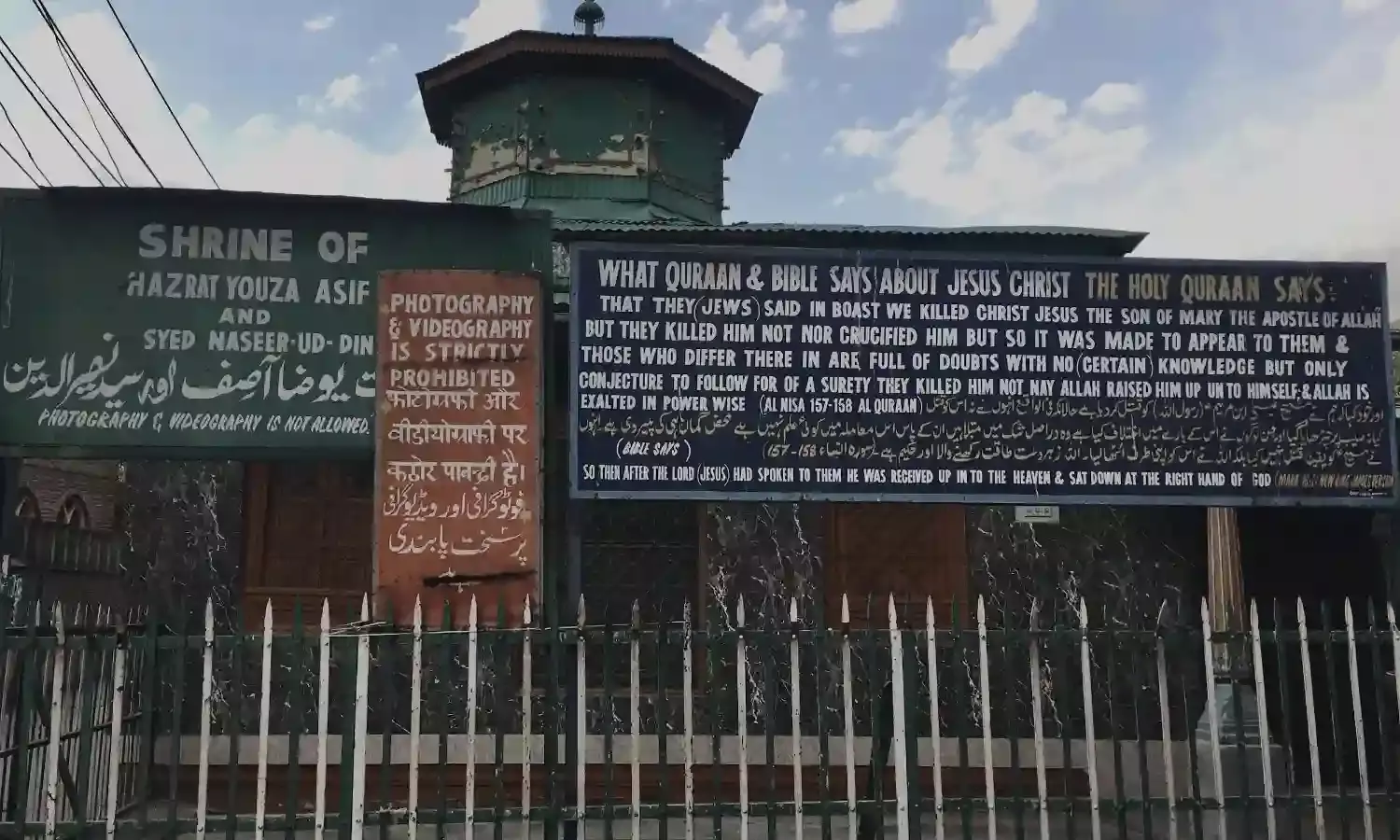
The Rozabal shrine is situated in the labyrinthine lanes of Khanyar, in the backstreets of Downtown, Srinagar, a few steps from the revered Dastgeer Sahib shrine, adjacent to Shaheed Mazar.
Rozabal is situated on a street corner in a town full of graves and mausoleums. The structure is a simple stone design with a traditional Kashmiri multi-layered slanting rooftop and a green hexagonal dome that hasn’t been recoloured in years, with green enamel flaking off its surfaces.
It is known as the tomb of Yuz Asaf, which could be of Buddhist origin or could be derived from Yusu or Yehoshua (Jesus).
Roza means tomb, and Bal means location. Locals believe a sage named Yuzasaf or Yuz Asaf is buried here, alongside another Muslim holy man named Mir Sayyid Naseeruddin.
Mirza Ghulam Ahmad, the founder of the Ahmadiyya Muslim community, is said to have been the first person who claimed, in 1899, that Rozabal was the burial place of Jesus.
Until that point the shrine was relatively unknown, with only a few Iranian visitors arriving occasionally to pay their respects at the grave of the Shia saint Syed Naseer-ud-Din.
From that point forward, Ahmadiyya Muslims have believed that Jesus after being crucified fled to India via the older Silk Route, in order to save his life.
The belief is shared by numerous Ahmadis today. However, the local Sunni caretakers of the Rozabal shrine believe that the theory that Jesus is buried anywhere on the face of the Earth is disrespectful to Islam.
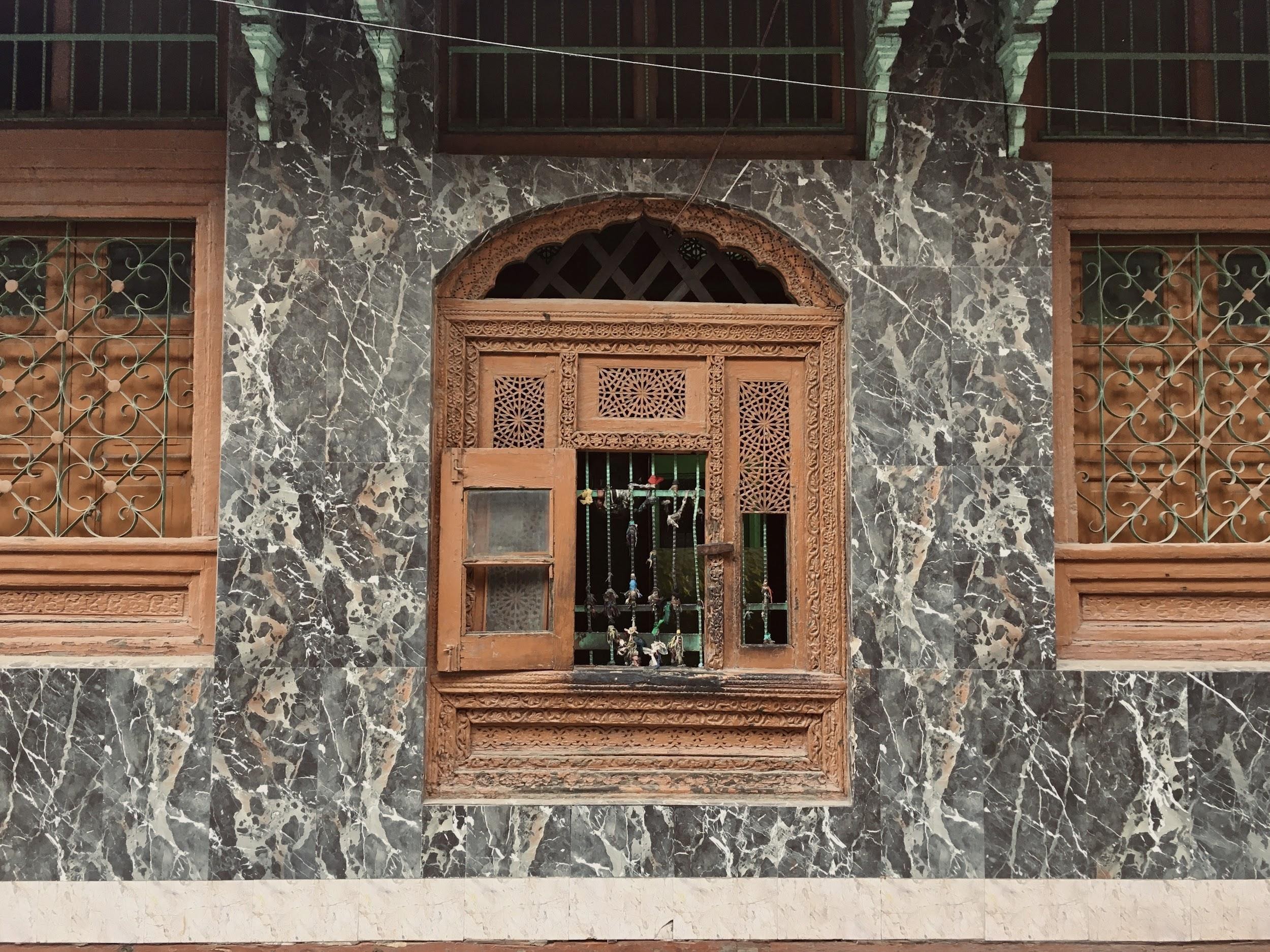
According to locals, Yuz Asaf arrived in Kashmir from Palestine during the reign of Raja Gopadatta (49-109 AD).
The shrine structure is rectangular in shape and has an adjoining entrance chamber. The common graveyard is located to the east of the structure. The current building’s base is rectangular and surrounded by walls made of brown marble slabs. The cella is a historic edifice with a green cloth covering the headstone, with holy names on top of it. This cella is said to contain the remains of the sage, Yuz Asaf.
The building also houses the grave of a Shia Muslim saint, Mir Sayyid Naseeruddin, a descendant of Imam Ali Musa al Raza, eighth Imam of the Shia Muslims, whose shrine is in Mashhad, Iran.
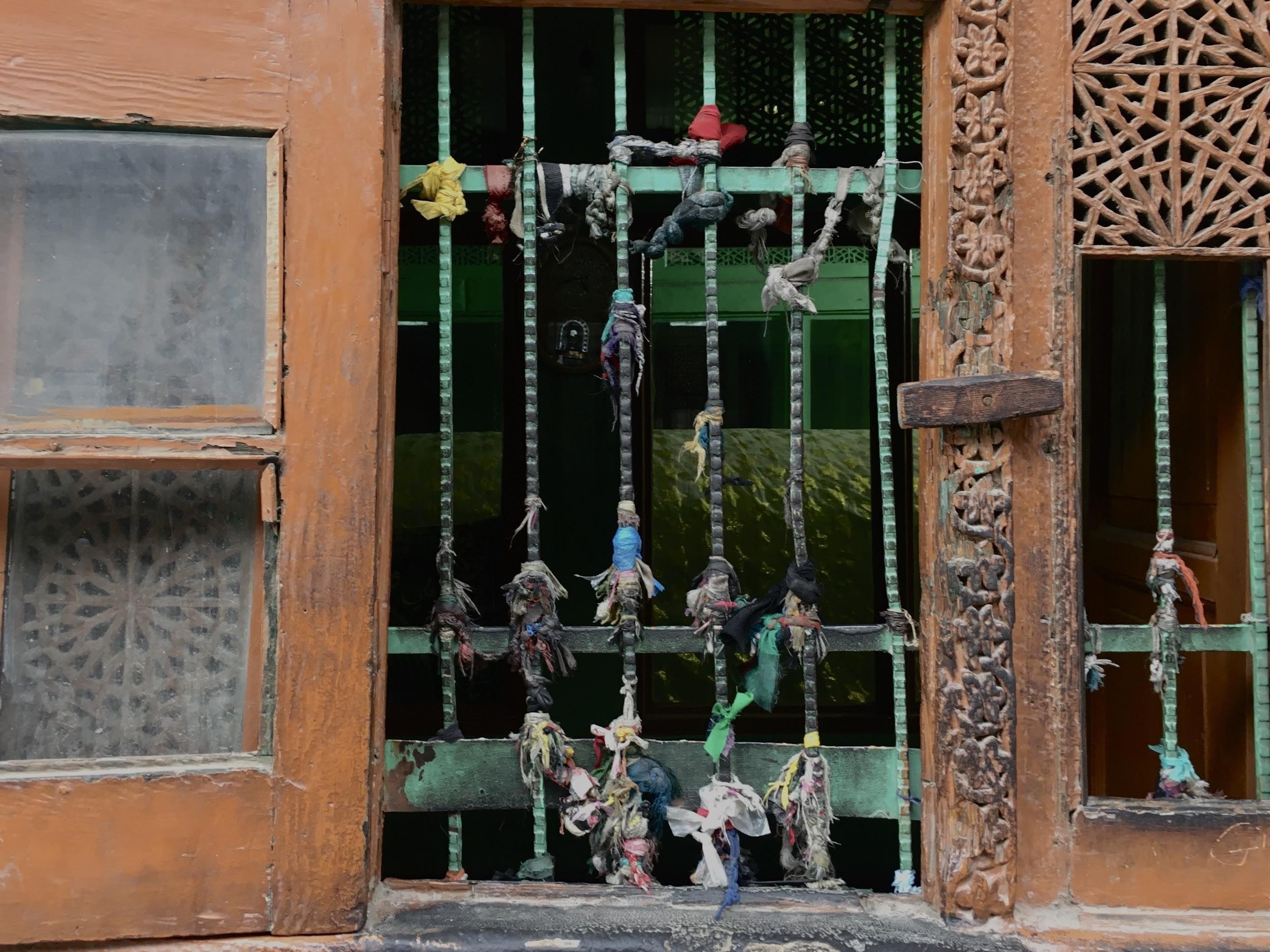

A small door leads to the interiors of the shrine, which opens only on the 13th of each Islamic month. An old glass-paned grilled window, with ribbons and threads tied to the iron rods, remains open alongside a narrow alley, giving a glimpse inside the dimly lit shrine.
The shrine is first mentioned in Khwaja Muhammad Azam Didamari’s Waqi’at-i-Kashmir (Story of Kashmir, published in 1747), also known as the Tarikh Azami. According to Muhammed Azam Didamari, the local Sufi author, the tomb is that of a foreign prophet and prince named Yuz Asaf, or Youza Asouph in modern Kashmiri transcription.
Numerous historical texts in Sanskrit, Buddhist, Arabic, and Persian are said to corroborate that Yuz Asaf is another name for Jesus Christ. Indeed, the name Yuz Asaf is mentioned in antiquated Urdu literature, wherein Yuz means leader and Asaf means purified or healed - alluding to the ‘Leader of the Healed,’ as Jesus Christ is said to have cured many people suffering from leprosy during his lifetime.
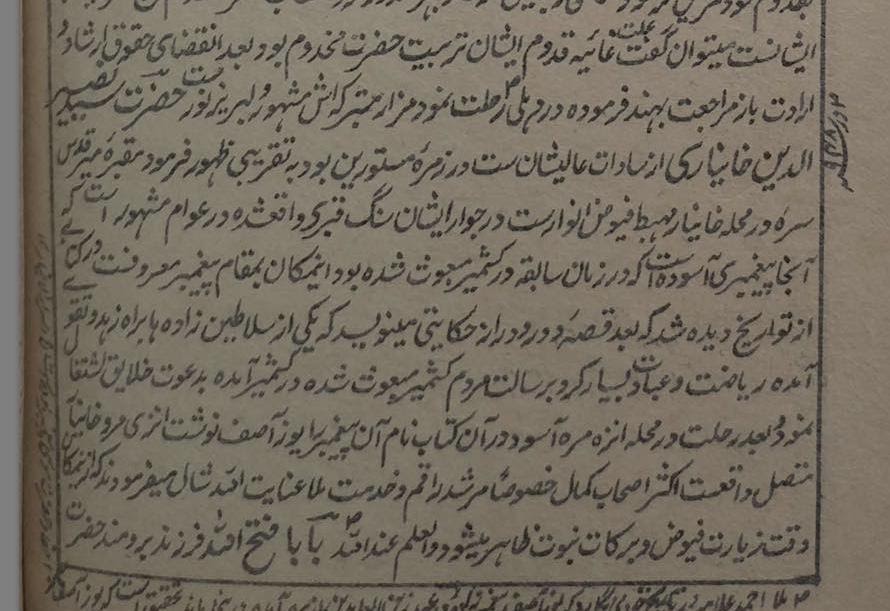
In some books Yus Asaf is also referred to as ‘the Son of Joseph.’
In folklore, the name Yuz Asaf is associated with the legend of Balauhar and Yuzasuf, in which Yuzasuf is another moniker for Gotama Buddha.
A large number of historians and theologians refute the idea of a crucified man travelling thousands of miles to die in a strange land. But then, the customary story is no less whimsical.
As indicated by legend, Jesus was accompanied by his mother, Mary. She died en route and her tomb is to be found in a town called Murree, which was named in her honour and is presently a part of Pakistan. The tomb is known as Mai Mari da Astan, which means resting place of Mother Mary.
According to the myth, Jesus survived crucifixion and spent his last days in Kashmir. But the locals don't believe it to be true, and consider the myth profane.
“This is the grave of a Muslim saint. It is clearly written in our holy book, the Qur’an, that Jesus was ascended up to heaven, to God. However, Qadianis and Mirzais (derogatory terms for members of the Ahmadiyya Muslim sect) who claim that this is the tomb of Jesus are false. No Muslim in the world believes Jesus is buried here or anyplace else on the planet,” said Tanveer, a local inhabitant.
The shrine has received a lot of attention over the years, with some fascinating discoveries: the tomb is directed east-west, a traditionally Jewish direction, rather than towards the Qibla, as would be the case with a Muslim’s tomb.
A footprint etched in stone, an artistic depiction of the crucifixion wounds, stands next to the grave.
The story traces all the way back to the late nineteenth century when Nicholas Notovich, a Russian voyager who visited Kashmir in 1887, published the book The Unknown Life of Jesus Christ.
Theories began to circulate that Jesus may have lived in India during his so-called lost years, when he was between the ages of 12 and 30, which are not documented in the gospels.
Suzanne Marie Olsson, an American historical-biographical author who self-published the books Jesus in Kashmir and The Lost Tomb has spent much time studying the shrine.
She proposed that the Roza Bal shrine should be taken over by UNESCO or the Government of India to preserve it, as it is a national heritage site, which should be open to the public.
Olsson claims to be a 59th generation descendant of Jesus. She had sought to examine the graves for samples for DNA testing, but that plea was unsuccessful. Her attempts were met with opposition from local residents who deemed it desecration of the shrine.
In a series of letters to the shrine’s caretakers, Olsson said she considers Rozabal a “private family tomb”. She further wrote: “My family has its origins in France, where Jesus and his wife Mary Magdalene lived. There, they had two sons and one daughter. We’re descendants of the son. And if you wish to know more, I refer you to a book called Bloodline of the Holy Grail by Sir Lawrence Gardner.”
Olsson added that she was considering moving court to press her claim and secure the right to exhume the tomb.
It was quite clear Olsson wanted to put her plan into action without wasting much time. Residents around the shrine allege that they were forced to padlock the shrine as Olsson tried to have it dug up.
When Olsson attempted to dig up the shrine to prove Jesus was buried there, it sparked communal outrage, prompting then Divisional Commissioner Parvez Dewan to intervene and halt her plans.
Locals have become increasingly wary of visits from curious foreign nationals since then, and they keep a close eye on the shrine.
“Yim tche ati behurmati karaan,” says Shabir, who lives near the shrine, adding that they do not allow foreign nationals to enter the premises.
A book on this theme was published in 2007 – The Rozabal Line by Ashwin Sanghi. Written in the style of a Da Vinci Code thriller, it inspired a large number of tourists to flock to the Rozabal Shrine in Srinagar. While undoubtedly good for tourism in the area, the influx was so large that the tomb had to be temporarily closed to visitors.

In an effort to dispel the myth, locals have installed a notice board that quotes verses from the Quran and Bible to disprove that Christ is buried at the site.
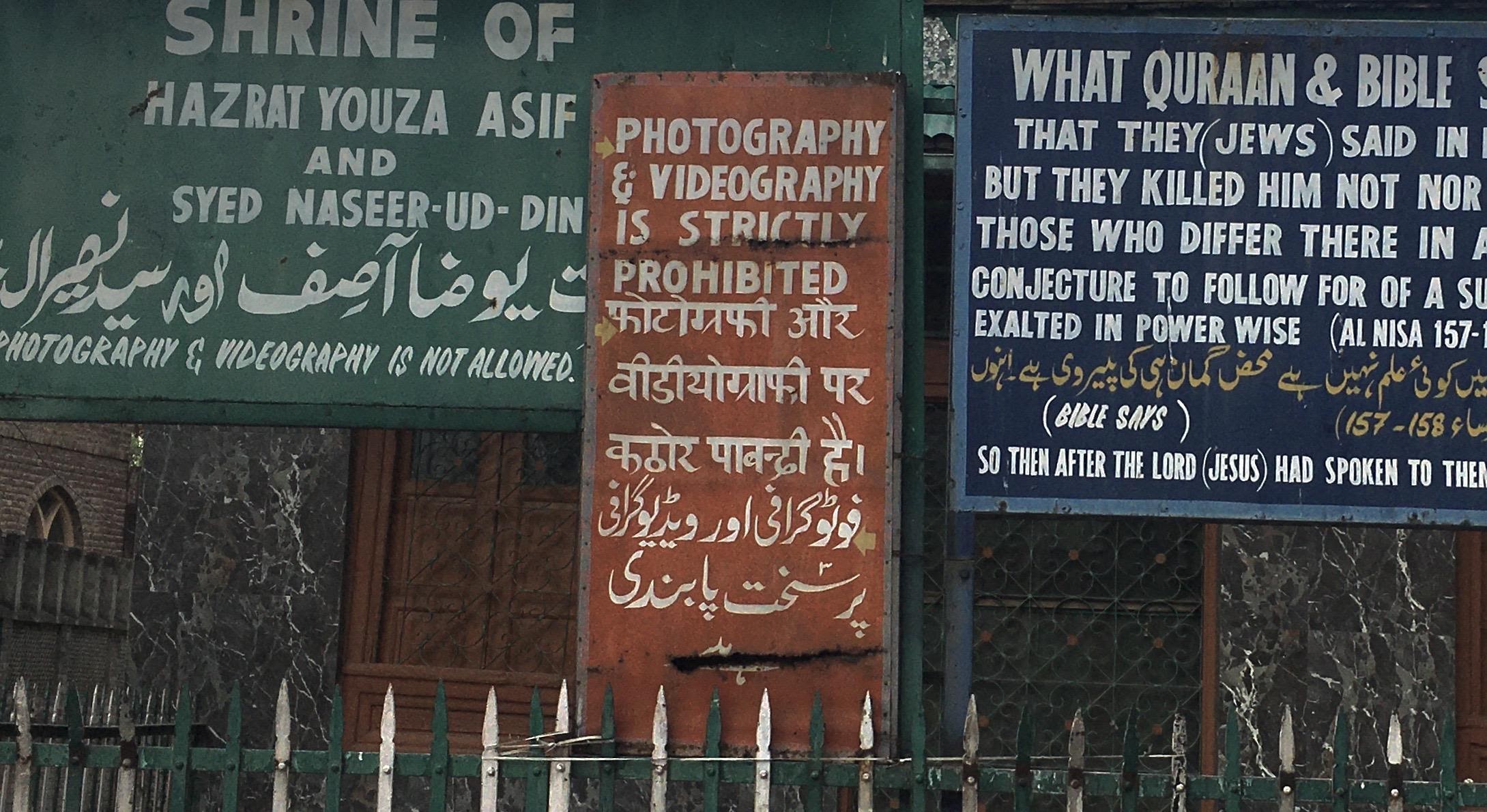
According to locals, the myth was spread by a couple of shopkeepers in the area.
“A professor in the vicinity claimed to be a descendant of Jesus. He wrote books about it, and a couple of local shopkeepers believed him and began spreading the word,” says Ghulam Rasool, who lives near the shrine.
“The information spread like wildfire. They did it all because they believed it would benefit their businesses after years of unrest and lockdowns,” adds Rasool, who is in his mid fifties.
“This theory is a hoax. Both the Quran and the Bible say that Jesus ascended into Heaven. How can we, as practising Muslims, believe that this is Jesus’ grave?”



